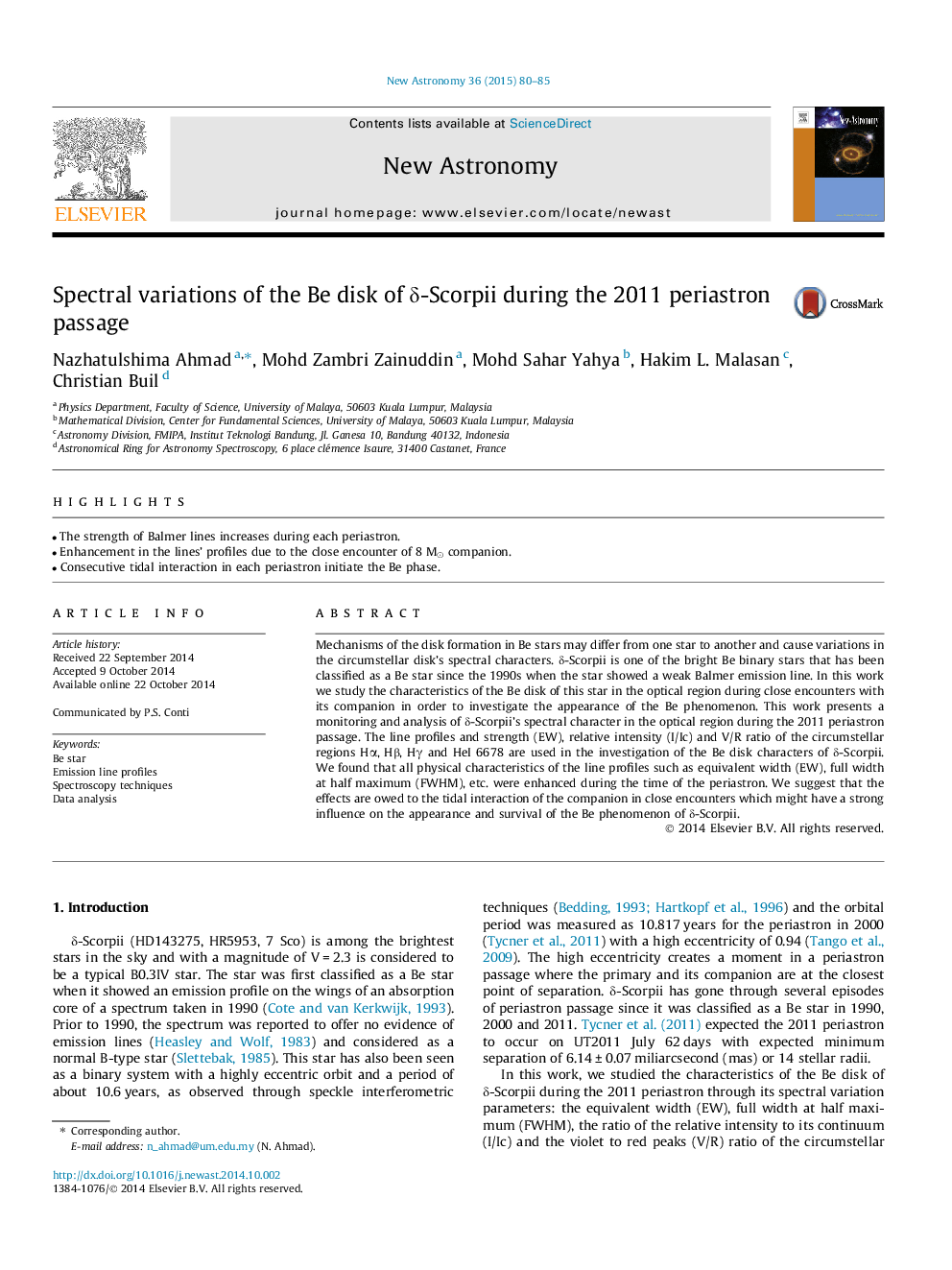| Article ID | Journal | Published Year | Pages | File Type |
|---|---|---|---|---|
| 1778884 | New Astronomy | 2015 | 6 Pages |
•The strength of Balmer lines increases during each periastron.•Enhancement in the lines’ profiles due to the close encounter of 8 Mʘ companion.•Consecutive tidal interaction in each periastron initiate the Be phase.
Mechanisms of the disk formation in Be stars may differ from one star to another and cause variations in the circumstellar disk’s spectral characters. δ-Scorpii is one of the bright Be binary stars that has been classified as a Be star since the 1990s when the star showed a weak Balmer emission line. In this work we study the characteristics of the Be disk of this star in the optical region during close encounters with its companion in order to investigate the appearance of the Be phenomenon. This work presents a monitoring and analysis of δ-Scorpii’s spectral character in the optical region during the 2011 periastron passage. The line profiles and strength (EW), relative intensity (I/Ic) and V/R ratio of the circumstellar regions Hα, Hβ, Hγ and HeI 6678 are used in the investigation of the Be disk characters of δ-Scorpii. We found that all physical characteristics of the line profiles such as equivalent width (EW), full width at half maximum (FWHM), etc. were enhanced during the time of the periastron. We suggest that the effects are owed to the tidal interaction of the companion in close encounters which might have a strong influence on the appearance and survival of the Be phenomenon of δ-Scorpii.
